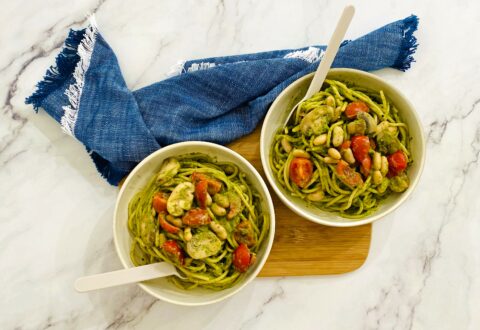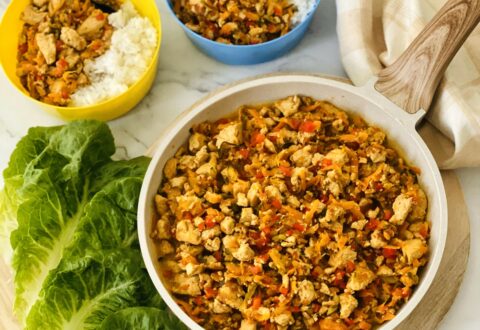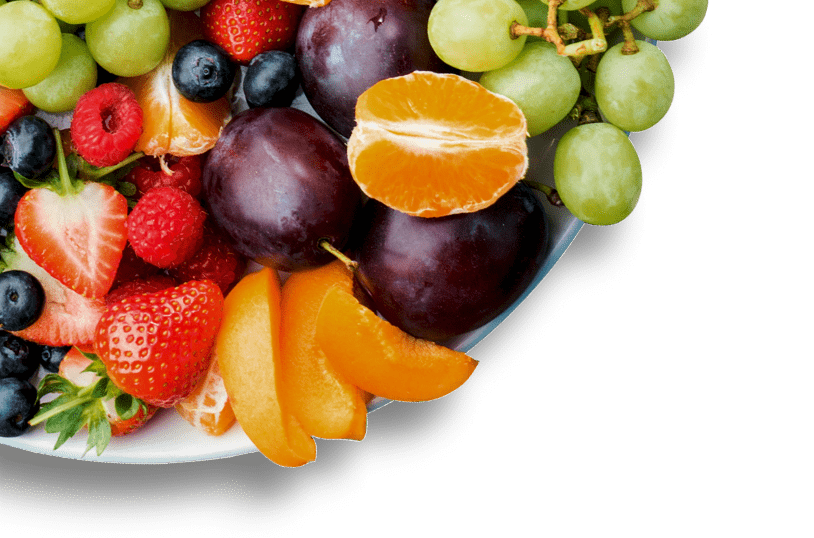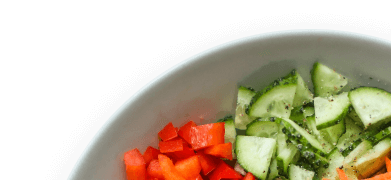Reading food labels to avoid food allergies and intolerances
In Australia all packaged foods must include a food label. Food labelling is governed by Food Standards Australia New Zealand (FSANZ).
Nutrition information is found in two places on a food label: the ingredient list and the nutrition information panel.
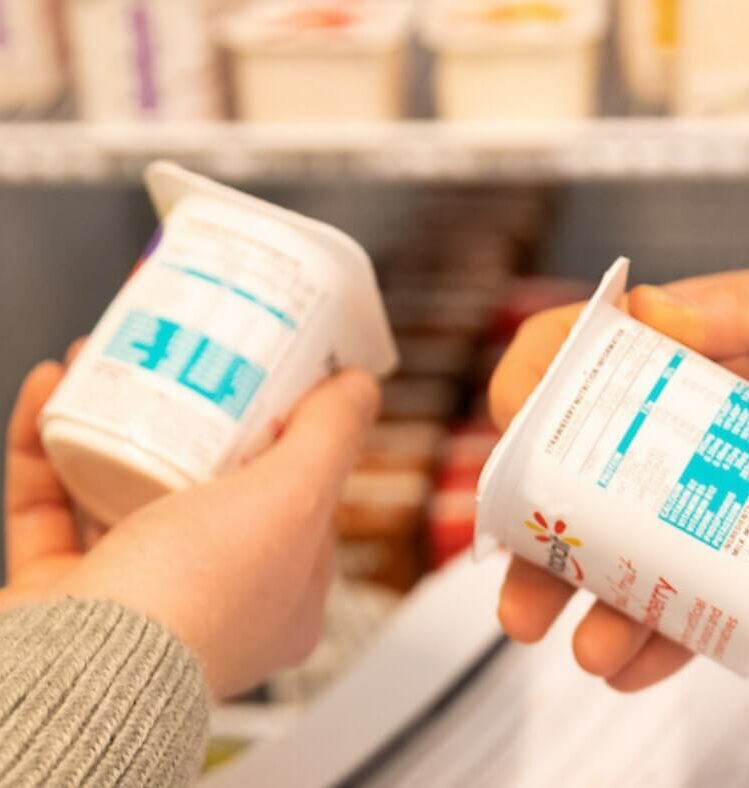
Sample food label
| Nutrition Facts Servings per packet: 6 Serving size (67g) | ||
|---|---|---|
| Average quantity per serve (67g) | Average quantity per 100g | |
| Energy | 710kJ | 1060kJ |
| Protein | 8.7g | 13.0g |
| Fat - Total | 1.9g | 2.9g |
- Saturated | 0.3g | 0.5g |
| Carbohydrate - Total | 27.4g | 40.g |
- Sugars | 1.6g | 2.4g |
| Dietary fibre | 3.2g | 4.8g |
The above is a sample food label for a packet of plain English muffins. The nutrition information panel on the label indicates the amount of energy (kilojoules), protein, fat (total and saturated), carbohydrate (total and sugar), dietary fibre and sodium in the product.
The nutrition information panel does not provide any details about food allergens. This information can be found in the ingredient list (which is found under the nutrition information panel in this example).
Sample ingredient list
| Ingredients: Wheat flour, water, baker’s yeast, wheat gluten, canola oil, iodised salt, fibre (oat, soy, wheat), vinegar, soy flour, maize polenta, raising agent (341), acidity regulators (263, 262), emulsifiers (481, 472e), preservative (200), sugar, vitamins (thiamine, folate) |
Ingredient list
An ingredients list must be included on all food products. Ingredients are listed from greatest to smallest by weight. Where very small amounts (<5%) of multi-component ingredients are present, the compound ingredient may be listed instead of each individual component.
For example, the ingredient ‘cheese’ in a cheese flavoured snack cracker may be listed rather than the individual components ‘milk’, ‘cheese culture’, ‘salt’ and ‘enzymes’.
In Australia, many allergens must be declared on food labels regardless of the amount present. This includes ingredients that may be classed as processing aids e.g. flour used to coat moulds. Allergens that must be declared by law are milk, egg, soy, wheat, fish, seafood, tree nut and peanut.
A variety of terms can be used to identify ingredients and allergens on a food label. For example, instead of simply including ‘wheat’ on the ingredient list, any of the following labels/statements can be used to describe the presence of wheat in ingredients:
- ‘Flour (wheat)’
- ‘Wheat flour’
- ‘Contains wheat’ at the beginning or end of the list.
It is important to check labels for allergens carefully every time a product is purchased as product recipes and processing techniques can change at any time without notice.
'May contain traces of'
This statement is used by manufacturers to indicate that products may be contaminated with common allergens (e.g. milk, soy, wheat, eggs, peanuts, tree nuts, fish, shellfish, sesame, gluten) during processing and packaging. At present ‘May contain traces of’ is a voluntary statement and there are no clear guidelines to direct food companies how and when it should be used.
The wording of this statement makes it very difficult to determine risk level and a product that does not include the statement may be no safer than a product that does. The likelihood of significant allergic reaction from contamination during processing is low. Many families choose to ignore ‘May contain traces of’ statements as the only safe alternative is to exclude all commercial food products from the diet.
As a precaution, ask families to document their stance on ‘May contain traces of’ statements in writing on allergy action plans so that centres can be clear about families’ expectations.
“Contains traces of”
If a label states that a food ‘Contains traces of’ a common allergen it is advisable to avoid this food as children may be sensitive even to very small amounts of the allergen.
Foods manufactured and packaged overseas
Australia has strict guidelines for the packaging and labelling of foods, but this is not necessarily the case in other countries. Foods manufactured and packaged overseas, and imported into Australia are strictly monitored. The food label must:
- have an ingredient list
- be written in English
- identify all potential allergens.
Stickers are permitted to list the ingredients and Australian-specific labelling requirements.
Be aware that other words may be used to indicate potentially allergenic ingredients on food labels from other countries, for example peanuts may be referred to as ‘monkey nuts’ or ‘ground nuts’.
Incorrect labelling is one of the most common reasons for product import failure.
Food labelling summary
- Check ingredient lists for potential allergens. Remember, ‘No news is good news’ – if the label does not specify the presence of an allergen it is not a direct ingredient.
- Check ingredient lists each time you purchase a product as ingredients can change.
- ‘May contain traces of’ is a voluntary statement used to indicate that a product may be contaminated with a potential allergen through processing or manufacturing. These products should only be excluded for children with severe allergies under direction from a health professional.
- Be wary of products from overseas.
Food preparation
Highly allergic children can have an allergic reaction from foods contaminated with food or ingredients they are allergic to, or from cooking surfaces and utensils contaminated with these foods or ingredients.
Ensuring utensils are clean and that separate utensils (for both preparation and serving) are used for allergy batches of recipes can reduce this risk. Contamination can occur from items such as knives, spoons, blenders, cutting boards, frying pans, deep fryers, toasters and barbecues.
It is advisable to prepare allergen free food first to reduce the risk of contamination.
It is also important to be aware of cross-contamination when storing food. For example, it is safer not to store wheat free flour next to wheaten flour. If space is available it is a good idea to have a separate shelf in the pantry for allergen free foods.
References
Adapted with permission from: Label reading and food allergies, Department of Allergy and Immunology, Royal Children’s Hospital Melbourne, November 2013.
For more information please phone 1300 22 52 88 or email heas@nnf.org.au
Except where otherwise indicated, the images in this document show models and illustrative settings only, and do not necessarily depict actual services, facilities or recipients of services. This document may contain images of deceased Aboriginal and Torres Strait Islander peoples. In this document, ‘Aboriginal’ refers to both Aboriginal and Torres Strait Islander people. ‘Indigenous’ or ‘Koori/Koorie’ is retained when part of the title of a report, program or quotation. Copyright © State of Victoria 2016
Written and reviewed by dietitians and nutritionists at National Nutrition Foundation, with support from the Victorian Government.

Featured Recipes
Explore all recipes
Register your interest
"*" indicates required fields






